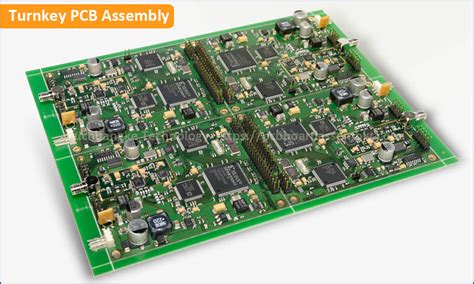Author: Printedcircuitboardmanufacturers
-

Beginner’s Guide to ESD Protection Circuit Design for PCBs
•
Introduction to ESD Protection Electrostatic Discharge (ESD) is a common phenomenon that occurs when two objects with different electrical potentials come into contact or in close proximity to each other. In the context of electronic devices and printed circuit boards (PCBs), ESD can cause significant damage to sensitive components, leading…
-

Single Sided vs Double Sided vs Multilayer PCBs
•
Introduction to PCB Types Printed Circuit Boards (PCBs) are the backbone of modern electronics. They provide a platform for mounting and interconnecting electronic components, enabling the creation of complex circuits and systems. PCBs come in various types, each with its own unique characteristics and applications. The three main types of…
-

An Introduction to Aluminum PCBs by RAYPCB
•
What are Aluminum PCBs? Aluminum PCBs, also known as metal core PCBs (MCPCBs), are printed circuit boards that use aluminum as the base material instead of the traditional FR-4 fiberglass. The aluminum substrate provides excellent thermal conductivity, allowing heat to dissipate quickly from electronic components. This makes aluminum PCBs ideal…
-

What is PCB Edge Plating
•
Why is PCB Edge Plating Used? Protection Against Corrosion One of the primary reasons for using PCB edge plating is to protect the exposed copper traces and layers from corrosion. When a PCB is manufactured, the edges of the board are often left exposed, leaving the copper vulnerable to oxidation…
-

What Is Via in Pad
•
What Are Vias? Vias are small holes that are drilled through the layers of a PCB to create electrical connections between different layers of the board. They are typically filled with a conductive material, such as copper, to allow electrical signals to pass through the board from one layer to…
-

5 Myths about PCB Design-Busted!
•
Myth 1: More Layers Always Mean Better Performance One of the most pervasive PCB myths is that adding more layers to a PCB will always improve its performance. While it’s true that multi-layer PCBs can offer certain advantages, such as reduced noise and improved signal integrity, adding layers isn’t always…
-

Streamlining Board Design Documentation with Draftsman in Altium Designer
•
Introduction to Draftsman and its Role in Streamlining Documentation Altium Designer, a leading PCB Design Software, offers a powerful tool called Draftsman that streamlines the creation of board design documentation. Draftsman enables designers to efficiently generate professional-quality documentation directly from their PCB designs, saving time and effort while ensuring accuracy…
-

When should I choose 2 layer PCB or 4 layer PCB
•
Introduction to PCB Layers Printed Circuit Boards (PCBs) are the backbone of modern electronics. They provide a platform for mounting and interconnecting electronic components to create a functional circuit. One of the key decisions in PCB design is choosing the appropriate number of layers. In this article, we will focus…
-

What Is Turnkey PCB Assembly
•
Introduction to Turnkey PCB Assembly Turnkey PCB (Printed Circuit Board) assembly is a comprehensive service that encompasses the entire process of designing, manufacturing, and assembling printed circuit boards. This service is designed to streamline the PCB production process, allowing clients to receive fully functional and tested PCBs without the need…
-

What Is Automated Optical Inspection AOI in A PCB
•
Introduction to AOI in PCB Manufacturing Automated Optical Inspection (AOI) is a crucial technology used in the manufacturing of Printed Circuit Boards (PCBs) to ensure quality control and detect defects. In the highly competitive and quality-driven electronics industry, AOI has become an indispensable tool for manufacturers to maintain high standards…